Bidding goodbye to Bo Ryan and his unforgettable run with the Badgers

In the spring of 1990, a little less than a year before he won his first Division III national championship, Bo Ryan self-published a coaching instructional booklet. It was 28 pages—14 standard, white, 8.5”x11” sheets folded in half and stapled together twice on the crease, with an orange, slightly heavier-stock cover sheet. Its title was The Swing Offense, and under that was a crude drawing of a court with “Platteville Basketball” typed on it. Ryan had just finished his sixth season as head coach at UW-Platteville, an NAIA team transitioning to D-III, at a former mining school that had become popular for its engineering program, in a southwestern Wisconsin town of slightly fewer than 10,000 people.
Ryan’s Swing Offense, at its most basic, called for players to be arranged in a ball-side triangle (one at the lane-line extended, beyond the arc; another on the wing; another on the block) while the weak-side players (one on the other lane-line extended, another on the weak-side wing) “interchanged” by making cuts and keeping potential help defenders occupied. Its goal was to get the ball into “a high-percentage area”—back then, the post—to generate points and fouls. Swing wasn’t a reference to reversing the ball via pass from side-to-side. It was what happened after the ball was reversed: the player now furthest away from the ball swung to the low post on the ball side, creating a new ball-side triangle. The offense was hardly revolutionary, but the swing action meant that the low post could potentially be occupied by anyone on the team, rather than a center roving from block-to-block. Everyone was a potential post, cutter, or perimeter playmaker, and this interchangeability was what made the swing interesting, especially in the decades to come, when Ryan would have stretchier, NBA-level big men at his disposal as opposed to engineers.
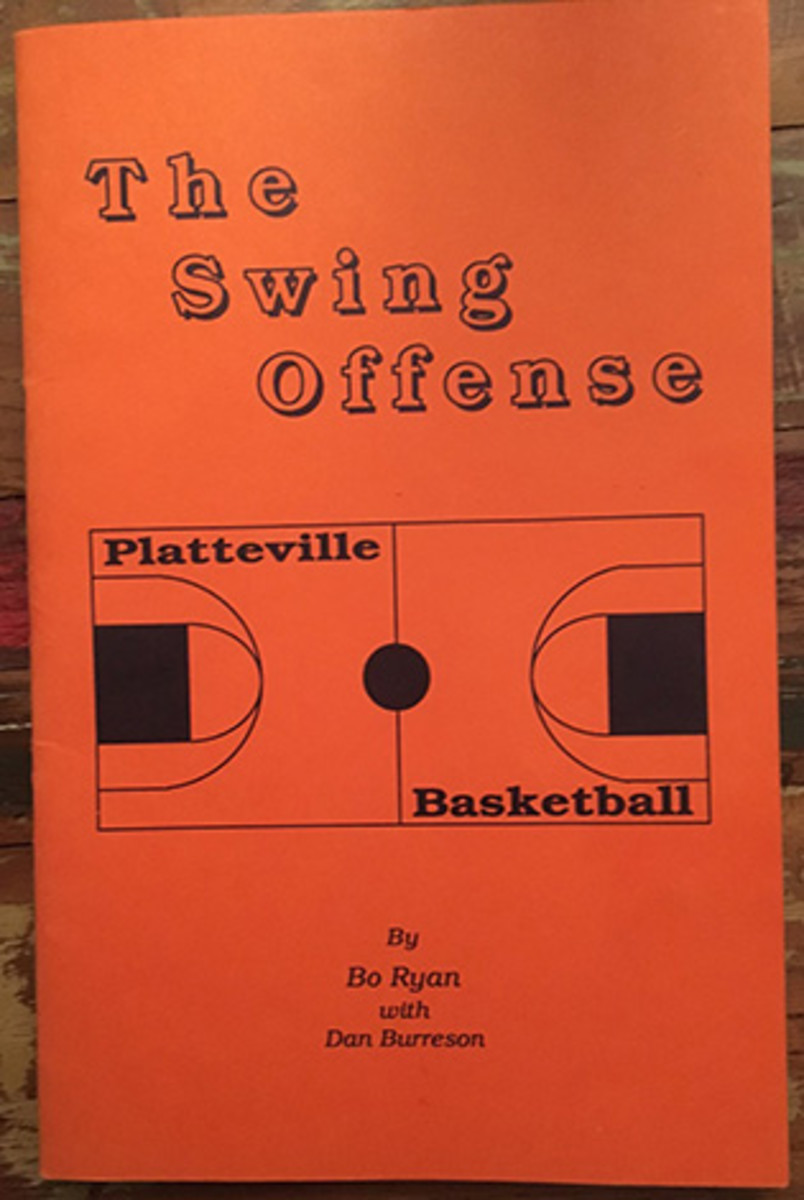
The booklet laid out the rules, terms and the schematics of the Swing in simple language. Reading it now, 25 years later, everything still seems applicable and reasonable—except for the far-too-wishful line that concludes Ryan’s introductory note. “It is my hope,” he wrote, “that this offense works as well for you as it has for us.”
That’s not gonna happen. No one will ever be as successful as Ryan has been with the Swing. He won four D-III national titles at Platteville, and after a brief stop at UW-Milwaukee, reached the NCAA tournament in all 14 of his seasons as head coach of Wisconsin. In 2013–14 he took the Badgers to the Final Four; in ‘14–15 he took them to the national title game—and that team had the highest adjusted offensive efficiency rating (127.9) in the entire era kenpom.com has been tracking that data (2002-present). It’s possible that Ryan’s ‘14-15 Badgers were the most efficient college basketball offense of all time.
The offense Wisconsin was running, by 2015, was not a carbon copy of the Swing from the 1990 booklet. Ryan didn’t build a Hall-of-Fame résumé by refusing to evolve. There were pick-and-pop actions added for star center Frank Kaminsky; there were isolations; there was a green light to shoot in transition; the three-point arc shared status with the blocks as the “high-percentage area.” But the offense’s core structure was still the Swing. Triangles forming and reforming. Cutters interchanging. A methodical, defense-demoralizing continuity that ate up the shot clock and sometimes seemed like it would never end ...
... until late on the evening of Dec. 15, 2015, when Bo Ryan sounded the buzzer. He walked into his press conference at the Kohl Center following a 64–49 win over Texas A&M Corpus Christi, sat down, put on his glasses to inspect the game’s box score, complimented a few of his players, and at the deliberate pace of many of his best offenses, eventually got around to the news: He was retiring, effective immediately, after 32 seasons as a head coach and at 67 years of age. His top assistant, Greg Gard, would be taking over for the rest of the season. Ryan had written some words on a sheet of paper to help him explain the move, but he didn’t seem to truly have the words. He never unfolded his sheet, and at one point said, before trailing off, “I don’t know what it’ll be like, not being able to be ...”
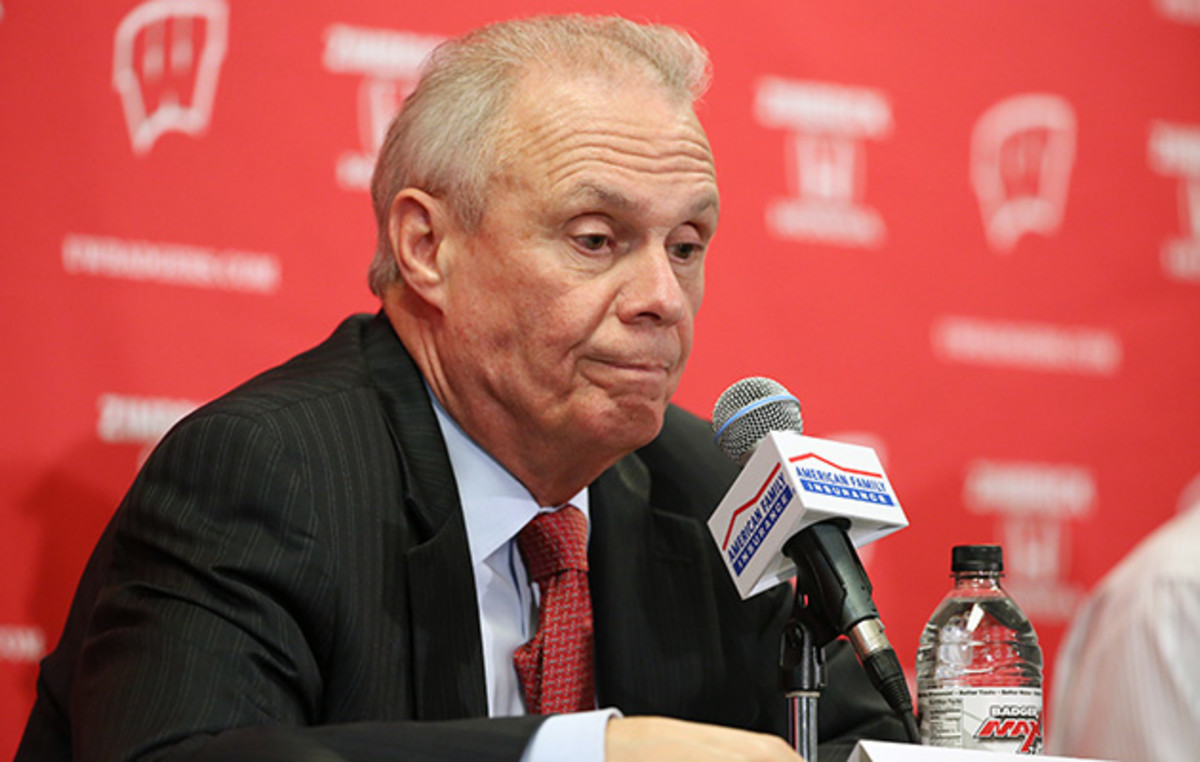
*****
It wasn’t a perfect ending. One of Ryan’s players from the ‘14-15 team told me that if the Badgers had won the national title in April, he believed Ryan might’ve just retired then, and walked away a champ. But Wisconsin didn’t win—it squandered a second-half lead against Duke and its band of one-and-dones—and Ryan didn’t have athletic-department support for his desired succession plan of handing the team to Gard, his assistant of 22 years. So Ryan stayed, and even backed off of an initial statement that he’d retire following ‘15–16. He coached a semester into a season in which the Badgers struggled to a 7–5 start with a gutted roster, and then made a strategic move that ensured the more-than-capable Gard would get a half-season tryout before athletic director Barry Alvarez could make a hiring decision. Walking away in December is awkward, especially during a season that was threatening to end Ryan’s perfect streak of 14 NCAA tournament bids at UW. But he had his reasons, and what he’s done in Madison is too significant for this to taint it.
• MORE: Ryan’s retirement opens door for Gard to take over
It was either this April, seeing all the red-clad fans in Indianapolis’s Lucas Oil Stadium for the national championship game, or in June, seeing two Badgers first-round picks, Kaminsky and Sam Dekker, sitting at green-room tables in Brooklyn’s Barclays Center for the 2015 NBA draft, that the state of the Wisconsin basketball program began to seem surreal to me. I didn’t attend the university, but I grew up 35 minutes away from its Madison campus, my parents had season tickets for most of my childhood, and prior to defecting for college, I was a fan. Kids who were raised around Indiana or North Carolina or UConn or Arizona or teams with any hoops tradition will not be able to relate to this, but I was born in 1980 and it took until ‘89 for the Badgers even to finish above .500. They sold T-shirts in March of ‘89 commemorating their mere bid to the NIT—their first postseason appearance of any kind in 42 years—and then lost in the second round. It took another five years, until 1994, for Wisconsin to earn its first trip to the NCAA tournament since 1947 (the year Ryan was born) and until 2000 for then-coach Dick Bennett to break through to the Final Four.
I spent 18 years growing up in Wisconsin and the Badgers made two NCAA-tourney trips during that time (‘94 and ‘97), and won just one NCAA-tourney game. Thus there had always been two universes for me as a fan: the Wisconsin universe, where the team mostly stunk, where everyone I rooted for aside from Michael Finley never made the NBA, where the games were on Raycom and never CBS, where you cherished a few memorable upsets at the moldy, old UW Fieldhouse, such as a throttling of the Fab Five in 1992—and then the universe of powerhouses that actually competed for Final Fours. It was perfectly acceptable to bandwagon a non-Big Ten team from that pool, become a Kansas or a UNLV or an Arizona fan for a few weeks in March, because it posed zero conflict with Badger fandom. The universes did not intersect.
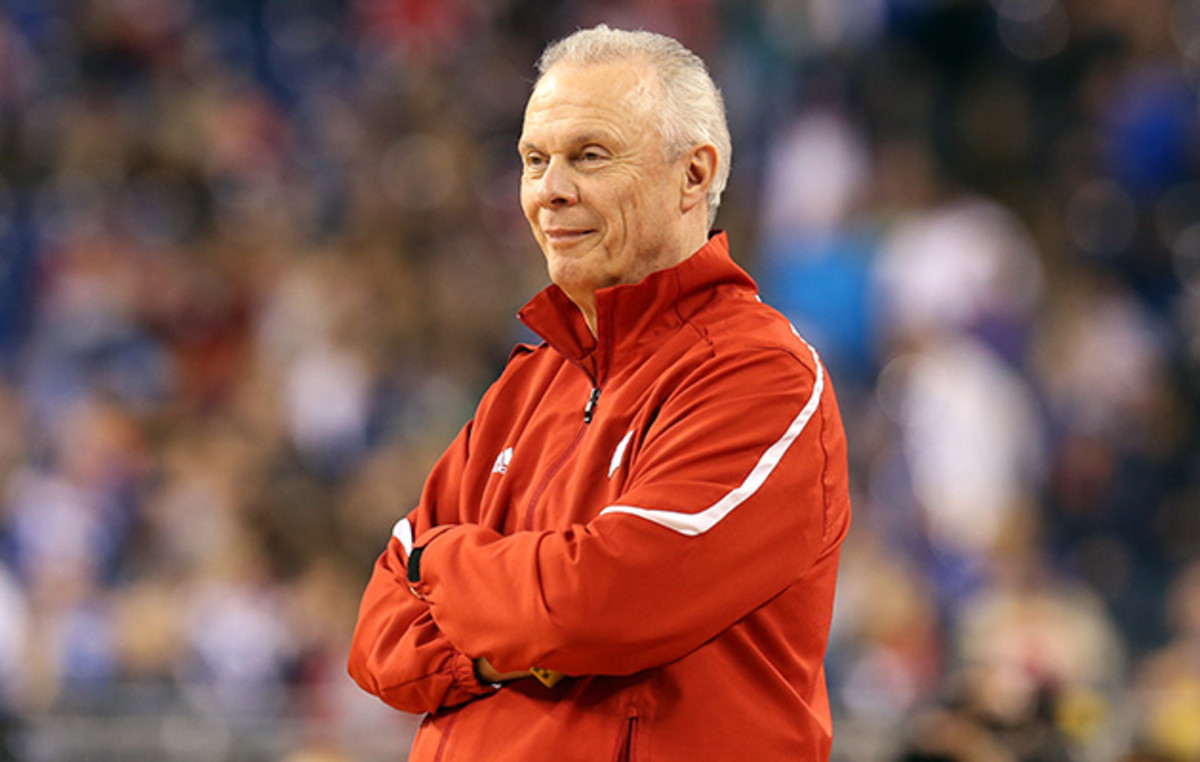
Late on Tuesday night, I called my mother, a Wisconsin grad, to ask her what she thought of Ryan’s retirement. She was shocked, because she hadn’t heard yet—she’d been at the game in Madison, along with my father, but they’d driven home with the radio off, don’t actively monitor Twitter, and had yet to turn on the TV. None of the fans at the Kohl Center had any idea, while it was happening, that they were seeing Ryan’s last game as head coach.
I said I’d probably write something, and asked if she could remember anything funny from the days when Wisconsin sucked. Things that starved fans perceived as a big deal, like the NIT shirts, or how as a 10-year-old, I viewed Tim Locum, a solid three-point shooter with a rockin’ mullet and no NBA future, as a heroic figure, because I lacked appropriate points of reference.
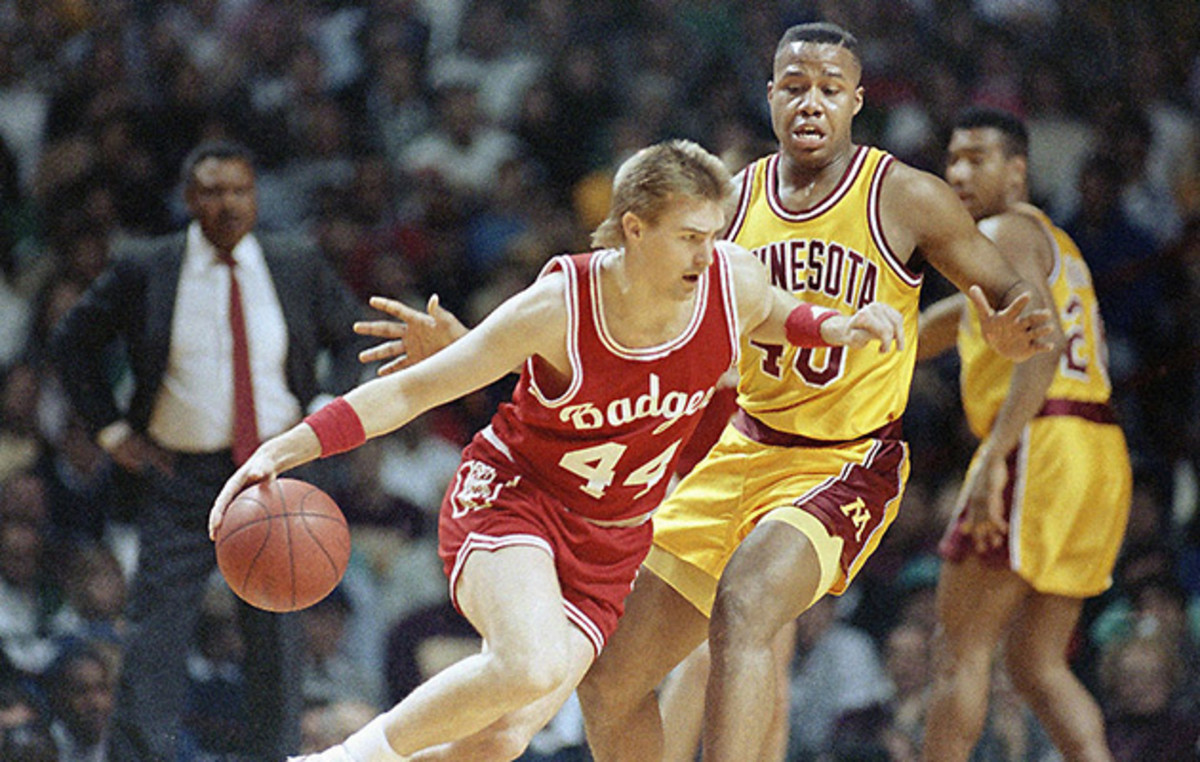
“It’s funny,” my mother said. “I can’t remember back to when I thought Wisconsin sucked. I think the last few years have spoiled us all, and made my other memories disappear.”
The Bo Ryan Era at Wisconsin began in 2001 and was so consistently good, and its peak was so stupefyingly great, that it made some people forget there ever was a dark age. That is a legacy.
*****
I remember visiting Ryan’s office in Madison in April 2014, on the day before Wisconsin was leaving for his first Final Four. I was assigned to write Sports Illustrated’s magazine story on the Badgers if they won the title and needed to do advance reporting. People from Ryan’s past, from in and around Chester, Pa., where he grew up, were re-entering his life and sending him stuff now that he was in the national news. Among the items that had surfaced was a team picture of a rec-league squad he’d played on while working as a substitute high-school teacher in 1972, a year after getting out of the Army. It was a ridiculous gang of longhairs in long pants, with short-sleeved ringer jerseys that said Louie Dee’s: The Sub on the front, for their sandwich-shop sponsor. Ryan was on one knee, in the front row, with Ramones-ish black hair. “The only reason I didn’t have mutton chops,” he explained, “was because I couldn’t grow any.”
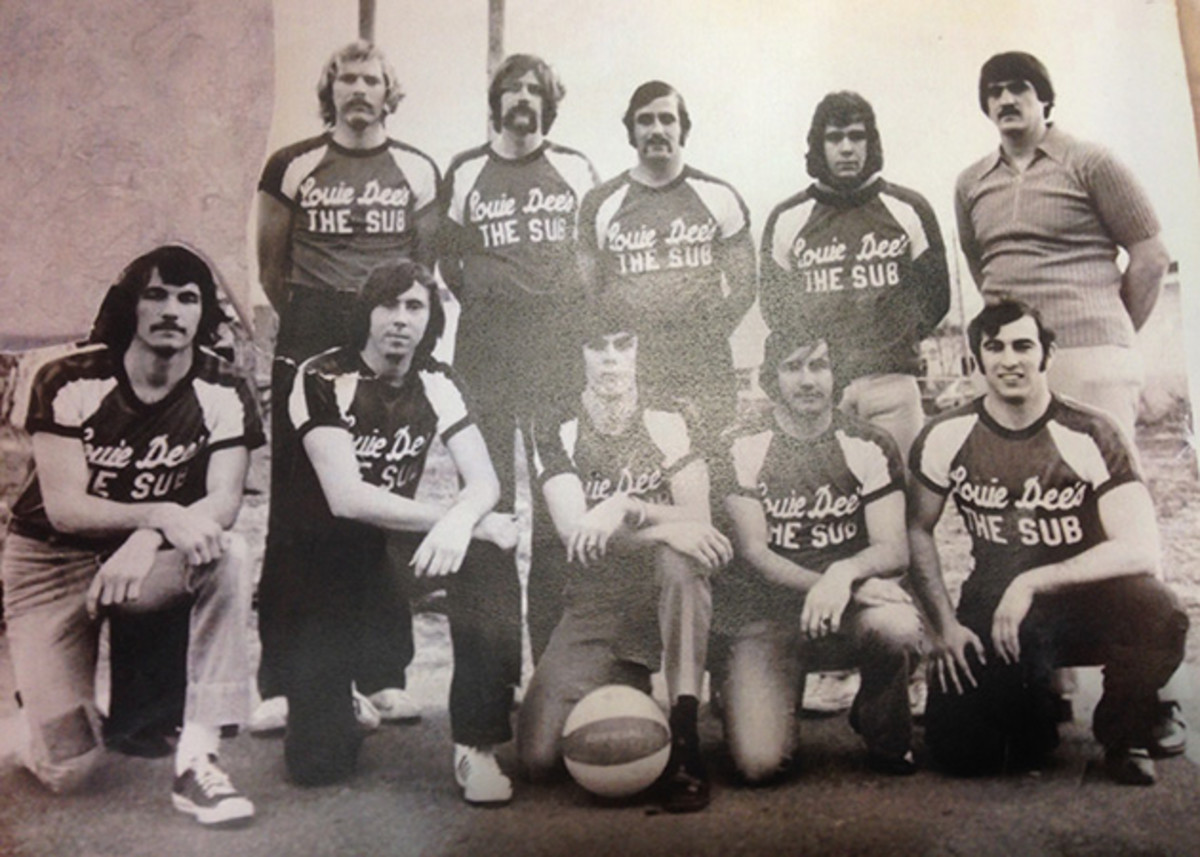
This guy—Chester, the U.S. Army, Louie Dee’s subs, UW-Platteville—was headed to Arlington, Texas, for a Final Four whose other coaches were John Calipari, the nation’s slickest salesman and recruiter; Kevin Ollie, a former UConn star and NBA guard; and Billy Donovan, a former Providence star and NBA guard. Ryan was an anomaly who’d coached himself and Wisconsin into a different universe, while adhering to old methods and arcane sayings, such as “Praise to raise, but scold to mold,” that came from his late father, Butch, a youth-league coach in Chester. Ryan’s practices never stopped featuring vintage Swing-focused development drills, with all players working on post moves named the Moses (for Moses), the Sikma (for Jack), the Bernie (for Bernard King) and the Dominique (for Wilkins), and all players shooting from the perimeter. Anyone who failed to pass or catch the ball with two hands received a scolding, and Ryan’s offenses were consistently great, in part, because they minimized mistakes. His incredible ‘14–15 team turned the ball over on just 12.4% of its possessions, the lowest rate in the nation.
A coach so committed to mistake-avoidance does not do anything haphazardly, and so his Tuesday announcement was calculated. It was the only way for him to give Gard a true audition to take over at the program they’d turned into a national power. Three years after Ryan wrote Swing Offense, Gard, who’d grown up in a town of 440 people just northeast of where Ryan was working, became his undergraduate assistant, the low man in the office listed in the back of the booklet, at 209 Williams Fieldhouse, UW-Platteville, Platteville, Wisconsin, 53818. They’ve been coaching together ever since, doing things differently than most college programs, running an offense with triangles and interchanges: old-school in its language, modernly efficient in its execution; small in its beginnings, grand in its applications. Ryan’s retirement was timed to keep the swing in motion.
